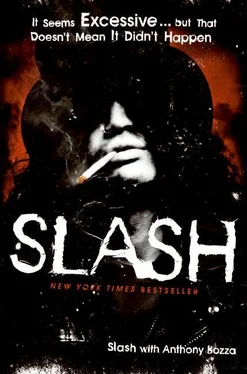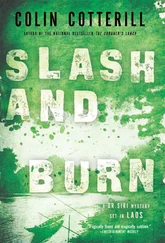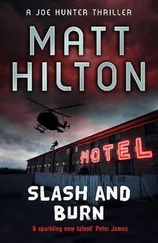It all seemed to be going great until Scott got arrested in the parking lot at Lavish one night: he was caught sitting there with some girl and they had drugs in the car. He was already on probation, and that was his last strike. It was a real turning point for him: when he was released from jail, he didn’t go home, he went back to his studio. He cued up a piece of music we’d given him a while before. And he wrote the lyrics to the song that became “Fall to Pieces.” Scott let it all out in that song: it’s a more honest portrait of where he was and what he was dealing with at that particular time than anyone could ever hope to see. It really paints a picture of what was really going on with him, and consequently with us as well.
WE WEREN’T SURE WHO SHOULD PRODUCE our record, so we tried out a few people; we threw around a few different names: Rick Rubin, Brendan O’Brien, and a few more. I’m not exactly sure who suggested Bob Ezrin, but we went into the studio and recorded “Slither” with him at Henson Studios. He’d just done the latest Jane’s Addiction record, but aside from that, his past work with everyone from Alice Cooper to Pink Floyd spoke for itself. It didn’t go as well as I’d hoped it would; Bob’s creative input for the song was too produced. He had too many things going on at once, using up too many tracks; the end result sounded too congested and too complex for what we saw as a simple song from a fairly simple rock-and-roll band.
We then decided to record a track with Josh Abraham, whom all of us knew. He was relatively new on the scene; his big claim to fame was producing the Staind record, which was a big hit. At least I was familiar with it and at the time he was working on the new Courtney Love record. We did a test track of a new song called “Headspace” with him at NRG Studios in North Hollywood. The track sounded good, the drums and guitars and vocals sounded good. It was enough for us to decide to do the rest of the album with him.
At that point the word was out about Velvet Revolver and we were getting a lot of interest from all of the major labels, although there weren’t that many left at that particular time. There was Chrysalis, Elektra, RCA, and Warner’s, and they were all interested. In the end we went with RCA.
But first we did the whole wine-and-dine free-lunch shuffle out in New York for a week or so. It wasn’t hard to decide who we’d go with once Clive Davis got on a plane with his A&R guy, Ashley Newton, to come see us rehearse in Toluca Lake. It was a great show of integrity and solidarity considering the setting. They sat in a room that was about twenty feet deep, with a pool table separating them from us and all of our amps right in their face. They sat through five songs like that. They wanted to get past the hype that now surrounded the band and see us play in our natural habitat.
“That was great, really great,” Clive said when we were done. “Thank you.”
They loved “Slither” and “Fall to Pieces,” and pretty much after that, our mind was made up. We went with RCA.
After preproduction with Josh at Lavish, we moved over to NRG to do the basic tracks. Coincidentally in the studio next door, Dean and Robert from STP were working on some new stuff, once again, right next door to us. This time they were unavoidable; they were literally in the next room and we shared a lounge. It was only a matter of time before Scott ran into them no matter what we did, but it was cool. They’d gotten over it; Dean sat down with Scott and I don’t know what they talked about, but afterward there were no hard feelings. Scott even played him our demos, all of us hung out, and it was all okay. That was the first time I met Dean, and I’ve seen both of those guys around since then and it’s been nothing but fine—both of them are really good guys.
WHEN IT CAME TO RECORDING MY guitar parts for the album, I wanted to go into a smaller studio to save the band some money, so Josh suggested that we do them at his studio on the south corner of Highland and Sunset boulevards; it is where Jimi Hendrix recorded Axis: Bold as Love . I walked in and the place was just a bit funky: bad shag carpet, an old paint job, cockroaches… stuff like that. I got into the studio with Josh and there was a really nice mixing board, but I looked up and noticed that there were just two small Yamaha AS-10 studio monitors for speakers, which are great for listening to stuff back, but I record my guitar in the studio by placing my amps in the main room, where the microphones are, and playing in the control room, where the producer and the mixing board are. I do this mostly because I can’t stand headphones. This setup was not going to work at all for my purposes. Up until then, as a rule, I’d recorded the basic tracks live as scratch-guitar tracks and redone them in the control room at megadecibel levels so that it felt like an actual concert when I truly laid them down. The monitor speakers are my reference points as to what I am recording, so they need to be big and they need to be loud . The pair in front of me weren’t going to cut it.
“So is this how you record guitars?” I asked Josh.
“Well… yeah, usually these studio monitors are enough.”
“I’ve never played that way and I can tell you right now that they’re not going to be loud enough.”
At that moment I thought of what my wife, Perla, had told me over and over again: I like to do things the hard way. I could see that I was throwing Josh and his whole studio setup into a tailspin. I wanted to work on that tendency of mine, so rather than make a fuss and insist that we book a new studio and perhaps a new producer, I chose to adapt.
“Listen, just call in some bigger speakers and we’ll make it work,” I said. Josh looked genuinely relieved.
I can’t say that it was a pleasant experience. The studio engineers kept renting us new speakers but none of them did an acceptable job. That’s not true—they got exactly the right set on the very last day of recording. In the end, I was satisfied with my work on our debut record, but when I look back on it now, it was a very uncomfortable, confining session for me. All in all, my playing is pretty reserved on that record, which is why there aren’t as many solos as there could have been. I felt too restricted to improvise the way I usually do.
I think Dave got a lot more out of the digital studio setup than I did when he came in to do his parts. He did great; he added all of these sound textures that really made the guitars complete.
At the time Scott had been court-ordered to stay in a halfway house, a sentence that resulted from his arrest. He’d come in and do his vocals and then go right back. He was only allowed to work for three hours a day.
DUFF AND I WENT TO NEW YORK CITY to sit in on the mixing sessions with George Marino engineering and then Contraband was finished. I had my first drink in over a year that night. I remained pretty quiet about my feelings on the GN’R/Axl situation up until Duff and I did a promo tour supporting the release of Velvet Revolver’s first CD. At that point, I hadn’t gone public about what had transpired between Axl and me, and I hadn’t planned on going there. But the media wanted to know my thoughts on the subject and I couldn’t help it. I had nothing pleasant to say. It was as if they had touched a raw nerve, and suddenly everything that came out of my mouth was bitter and spiteful—the complete antithesis of how I really wanted to react. When GN’R and I parted ways, I had honestly wanted to stay low-key and never bicker in the press, mostly because so many artists before me had gone that route and I thought it distasteful. But here I was, put in a corner with press in every direction, hungrily looking for controversy and prodding that raw nerve. I couldn’t control my responses. Everything I said about Axl was negative; it was almost emotional. This, of course, pissed off Axl and was definitely the catalyst for rant against me in his 2005 press release, not to mention complicating the GN’R lawsuit even further.
Читать дальше
Конец ознакомительного отрывка
Купить книгу




![Сол Слэш Хадсон - Slash. Демоны рок-н-ролла в моей голове [litres]](/books/387912/sol-slesh-hadson-slash-demony-rok-n-thumb.webp)


